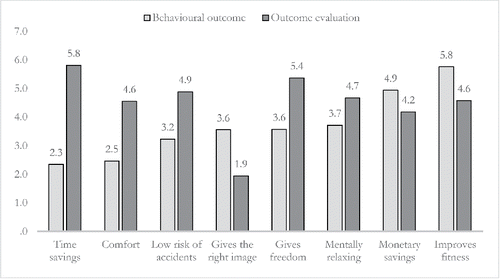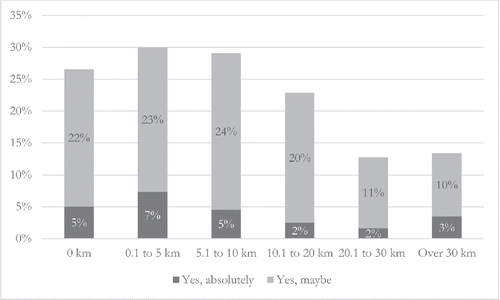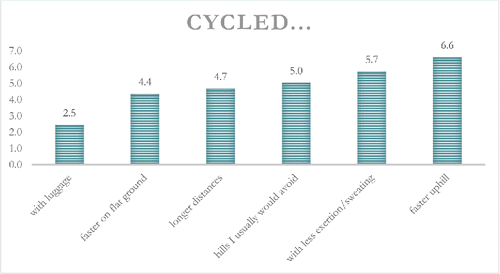Figures & data
Figure 1. The bicycle images shown in the conjoint experiment. Normal bike on the left and e-bike on the right.

Figure 2. Consolidated standards of reporting trials (Schulz, Altman, & Moher, 2010) flow diagram showing the number of participants in trial and control groups, enrollment, treatment allocation, follow-up, and analysis.

Table 1. Background characteristics of those willing to participate in the intervention, test group (after drop-out), control group (after drop-out), and all participants in recruitment survey.
Figure 3. Attitudes (behavioral beliefs) to cycling in everyday life. Behavioral outcomes (average score on a Likert scale from 1 to 7 (1 = not important at all, 7 = very important) and outcome evaluations (ranked assessment score from 1 “least important” to 8 “most important”). N = 5460.

Figure 4. Interest in buying an e-bike according to weekly cycling length. Percent “yes, absolutely” and “yes, maybe” N = 3263.

Table 2. Scores on the knowledge index versus self-reported knowledge. Mean scores (ranging from −6 to +6).
Table 3. Mean scores on habits, perceived behavior control, intentions to cycle more, attitudes, social norms, personal norms (two constructs), and intentions to drive less car for respondents with different levels of interest in buying an e-bike. F-scores and p-values (N = 4865).
Table 4. Ordinal regression with dependent variables “interest in purchasing an e-bike” (absolutely not, probably not, yes possibly, yes absolutely).
Table 5. Willingness to pay for a normal bike and extra for an e-bike according to travel mode on last trip to work. Unit = 1 €. (N = 2420).
Figure 5. How participants had taken advantage of the extra power from the electric motor (N = 61). 1 = to a very small extent; 7 = to a very large extent.

Table 6. Willingness to pay extra for an e-bike, total willingness to pay for an e-bike, and conjoint-type measure of willingness to pay for an e-bike in the test group and control group before and after the intervention.
